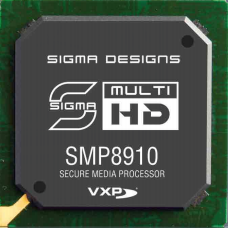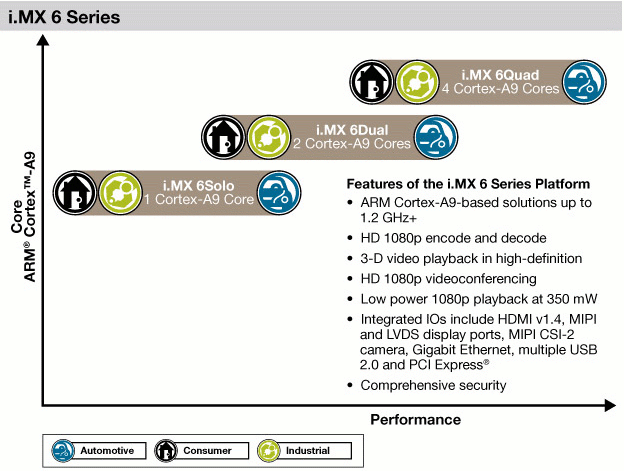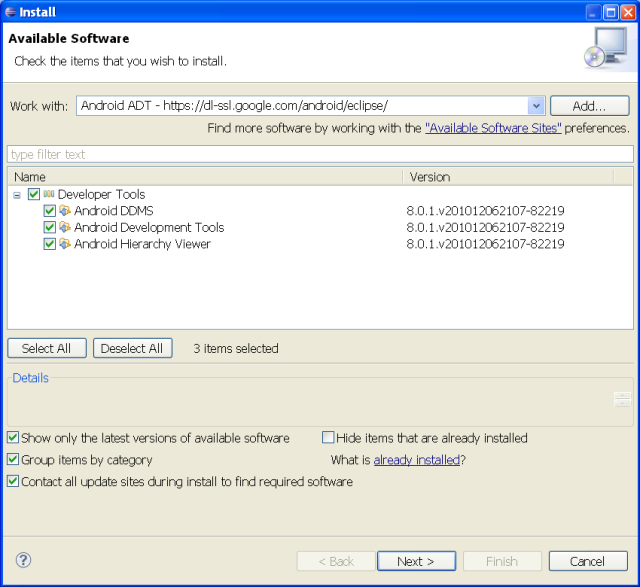Sigma Designs will announce its latest and all powerful Media Processor (SMP8910) based on MIPS at CES 2011. The SMP8910 with integrated studio-quality VXP® video processing provides a highly-integrated, high-performance solution for premium Blu-ray 3D players. It supports all the audio decoding options, video decoding options, and content protection requirements for Blu-ray players. The Secure Media Processor architecture offers advanced content protection, supporting a wide variety of Digital Rights Management (DRM) and Conditional Access (CA) solutions. Studio-quality VXP® video processing is included, offering fully adaptive deinterlacing, adaptive 3D noise reduction, mosquito noise reduction, block artifact reduction, adaptive detail enhancement featuring sharpness and texture enhancement with overshoot control, adaptive debanding, and adaptive contrast enhancement. 3D Video decoding of a variety of 3D Video formats is also featured, including Blu-ray 3D. Support for legacy, current, and future 3DTVs is provided by supporting a variety of 3D Video output formats. The high-performance 3D […]
The Next Version Microsoft Windows Will Support Embedded Systems based on Intel and ARM
Microsoft announced its new Windows operating system will support SoC based on ARM and is mainly working with NVidia (Tegra Processors), Qualcomm and Texas Instruments. This should allow their customers to provide a wider range of tablets running Windows OS. They will also keep working with AMD and Intel on their low power x86 processors. Here’s an excerpt of the press release: LAS VEGAS — Jan. 5, 2011 — Microsoft Corp. today announced at 2011 International CES that the next version of Windows will support System on a Chip (SoC) architectures, including ARM-based systems from partners NVIDIA Corp., Qualcomm Inc. and Texas Instruments Inc. On the x86 architecture, Intel Corporation and AMD continue their work on low-power SoC designs that fully support Windows, including support for native x86 applications. SoC architectures will fuel significant innovation across the hardware spectrum when coupled with the depth and breadth of the Windows platform. […]
Android 3.0 (Honeycomb) Video Preview
A preview of Android 3.0 (Honeycomb), the new Android OS optimized for larger screen size devices particularly tablets, is now available. It really looks great, with eBook reading, Gmail, YouTube, Google talk (with video) applications redesigned for tablets.
Lenovo LePad Android Qualcomm SnapDragon Tablet with Intel iCore Dock
CES has just started and Leveno showcased their new Android 2.2 tablet (Lenovo LePad) based on Qualcomm Snapdragon (MSM8x60?) @ 1.3GHz with 1GB RAM, a 10.1″ Capacitive touchscreen (1280×800). Currently on the Wifi version is available, but a 3G/GPS version will be available later this year. The Wifi version will start to sell this month for around 500 USD in China. They use their own UI called “Four Square” on top of Android, the same currently on their phones (LePhone). Lenovo also innovated by providing a dock for their tablet. Once you connect the tablet to the dock TaDa! it becomes a laptop based on Intel iCore 5 running Windows 7. The Intel dock will cost 800 USD. They can then switch back on forth between Android 2.2 and Windows 7 in less than a second. A new version of the LePad (new hardware) will also be provided later this […]
Freescale announces i.MX6 ARM Cortex A9 Multi-core Processor
Right before CES 2011, Freescale announced i.MX6 series, its latest multi-core Cortex A9 processor aimed at smartphones, tablets, eReaders and other consumer electronics equipment. Here’s an excerpt of the press release: Freescale delivers dramatic performance advances for tablet, smartphone, eReader, automotive infotainment and other hot consumer marketsCompatible i.MX 6 series scales from one to four cores and raises the bar with a new portfolio of high-performance, low-power multicore processors AUSTIN, Texas – Jan. 3, 2011 – Freescale Semiconductor introduces the i.MX 6 series of quad-, dual- and single-core applications processors designed to deliver outstanding performance and scalability to manufacturers targeting the hottest selling smart mobile, automotive infotainment and embedded device categories. Integrating one, two or four ARM® Cortex™-A9 cores running at up to 1.2 GHz each, the i.MX 6 series delivers up to five times the performance of Freescale’s current generation of applications processors. This performance provides additional headroom for […]
Android App Inventor – Develop Android App Without Coding
[Update: Google phased out App Inventor, but made it open source. It is now hosted by MIT at http://appinventoredu.mit.edu/welcome-to-app-inventor-edu“] We have previously shown how to setup your environment to develop Android application using Eclipse. However, if you are not into Java programming and learning Android API but still want to develop (simple) Android applications, that’s still possible thanks to App Inventor. App Inventor will allow you to create the application UI in your web browser (The Designer), configure how your application behaves via a Java JNLP (Java Network Launching Protocol) applet (The Block Editor) and run your application in your Android phone/tablet or if you don’t have hardware in an emulator (The emulator). For Windows XP + Emulator, all you’ll have to do is to follow the instructions in http://appinventor.googlelabs.com/learn/setup/setupwindows.html and then you’ll be able to create some “Hello Kitty” application. First download the installer. Run appinventor_setup_installer_v_1_1.exe to install the […]
Installing Android SDK on Windows XP – Hello World Application
You’ll find the full details for installing Android SDK at http://developer.android.com/sdk/installing.html. The purpose of this blog entry is to summarize what I had to do to install Android development environment (Android 2.3 SDK (Gingerbread)) on Windows XP. Before installing the Android SDK per se, you’ll need to install some set of tools used by the SDK. Here are the steps to setup your Windows XP computer for Android development: 1. Install Java Developer Kit (JDK) You need to go to http://www.oracle.com/technetwork/java/javase/downloads/index.html, select your OS (e.g. Linux, Windows, MAC…) and the file you want to download. I selected Java Platform (JDK), then downloaded Java SE Development Kit 6u23. I got the jdk-6u23-windows-i586.exe which I installed in the default directory, i.e. C:\Program Files\Java\jdk1.6.0_23). 2. Install Eclipse Classic Then you’ll need to install Eclipse, and open source IDE. Several versions are available at http://www.eclipse.org/downloads/, but since Google recommends Eclipse Classic, I just download […]
Top Ten Digital Signage Trends for 2011
As 2010 comes to a close, Digital Signage Today released their top 10 trends for 2011. Here’s a summary of those trends: Cross-media platform and technology integration: Digital signage systems and mobile devices such as smartphones and tablets will communicate more and more be it through QR Code, Near Field Communication (NFC), smartphone gestures, etc… Content will continue to be at or near the top of the list: More and more companies are involved in content creation for digital signage / digital out of hone (DOOH) and more diverse and complex content formats will be available. M & A and investment – The big shakeout of 2011: Expect more acquisitions that in 2010. Even larger amounts of ad dollars will migrate to DOOH: Digital Signage Ad growth spending will carry on, after a 14.8% growth in 2010. Experience, engagement and interaction: Instead of simply being an ad to promote a […]










